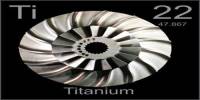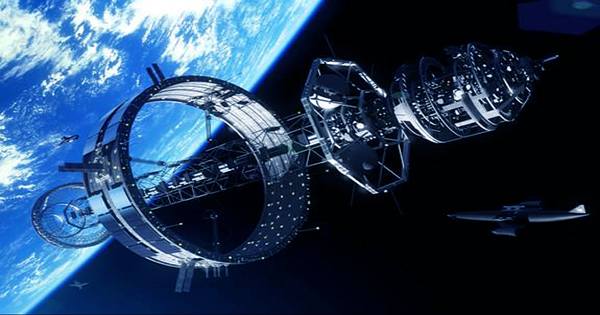Hydrogen is the first element in the periodic table with the atomic number 1 and the symbol H. It is the lightest and most abundant element in the universe, constituting about 75% of its elemental mass. Hydrogen is a non-metal and belongs to the alkali metals group. It is also the most basic and simplest element, consisting of only one proton and one electron.
For many years, physicists and material scientists have attempted to metalize hydrogen, but they have not yet been successful. In 1968, British physicist Neil Ashcroft predicted that atomic metallic hydrogen would be a high-temperature semiconductor.
The majority of recent investigations also suggested that, at temperatures above that of boiling water, this elusive and hypothetical form of hydrogen would conduct electricity without resistance. This prediction ultimately paved the way for the discovery of high-temperature superconductivity in hydrides (i.e., compounds containing hydrogen and a metal).
Researchers at Sapienza University of Rome, Sorbonne University, CNRS, and the International School for Advanced Studies (SISSA) have recently carried out a study aimed at thoroughly characterizing the behavior and properties of hydrogen at high pressures. Their study, which was published in Nature Physics, presents a highly precise phase diagram of high-pressure hydrogen that may help with current initiatives to produce atomic metallic hydrogen.
“The most advanced laboratories worldwide are trying to synthesize stable atomic metallic hydrogen by compressing hydrogen molecules into diamond anvil cells up to pressures millions of times higher than the atmospheric one,” Lorenzo Monacelli, one of the researchers who carried out the study, told Phys.org.
“However, the H2 covalent bond is one of the strongest in chemistry, and the pressure required to push hydrogen nuclei close enough to break the molecular bond is far higher than expected. Our work rationalizes the latest experimental findings and reports the most accurate determination of the high-pressure hydrogen phase diagram.”
It is difficult to accurately investigate the behavior, characteristics of hydrogen at high pressures since the required experiments are challenging to carry out, and conventional simulation methods frequently produce inaccurate results. Monacelli and his colleagues used advanced computational tools to create a phase diagram of hydrogen and deuterium at low temperatures and high pressures.
The quantum behavior of electrons and protons is different, as each proton weighs about 2,000 times the electron. In our work, we employed the ‘best’ method to solve the electronic problem (i.e., quantum Monte Carlo simulations) and the best approach to solve the proton quantum effects, namely the stochastic self-consistent harmonic approximation.
Michele Casula
“At such high pressure, many different molecular phases are stable,” Michele Casula, another researcher involved in this study, explained. “It is paradoxical and fascinating to discover how complex the phase diagram is despite the simplicity of its elementary brick, made of a proton and an electron only. In some sense, it is a particularly significant example of Phill Anderson’s famous motto: ‘More is different.’”
Solid hydrogen is fully comprised of free electrons and protons that interact with each other. The fact that these two types of particles interact intricately due to their quantum character makes simulating hydrogen a difficult task.
“The quantum behavior of electrons and protons is different, as each proton weighs about 2,000 times the electron,” Casula said. “In our work, we employed the ‘best’ method to solve the electronic problem (i.e., quantum Monte Carlo simulations) and the best approach to solve the proton quantum effects, namely the stochastic self-consistent harmonic approximation.”
The researchers were able to produce one of the most precise phase diagrams of high-pressure hydrogen to date using these cutting-edge computational tools. Specifically, they showed that the experimentally elusive atomic metallic hydrogen phase should form at 577(4) GPa, after another stage in which molecular hydrogen transitions from one metallic phase (referred to as phase III) to another phase in which the hydrogen is metallic and still molecular (phase VI).
“The comprehensive characterization of this material at ultra-high pressures provided by our work suggests that the atomic phase, supposed to be a room-temperature superconductor, must be searched experimentally at much higher pressures than previously suggested,” Casula explained. “Moreover, our study allowed the interpretation of recent experimental results in apparent contradiction, as researchers can indirectly probe the crystal structure at such high pressures.”
According to the new phase diagram of high-pressure hydrogen estimated by this team of researchers, hydrogen gradually starts to take on metallic characteristics as the pressure increases. It also demonstrates the possible reason why earlier attempts to produce atomic metallic hydrogen failed, namely that the pressures used in the tests were insufficient.
In their paper, Monacelli, Casula and their colleagues also present a complete and exhaustive spectroscopic characterization of hydrogen. This characterization, together with the phase diagram they developed, could guide future investigations targeted at seeing hydrogen in its atomic metallic phase.
“Notably, we predicted a clearcut isotope shift for the transition pressures, measured and confirmed very recently,” Monacelli added. “We are now focusing on studying the superconductive properties of hydrogen at high pressure. This problem is exciting and presents critical challenges, as the current theory of superconductivity based on the interaction between lattice vibrations (phonons) and electrons misses some crucial aspects present in hydrogen and hydrides.”
Monacelli and Casula pointed out that the current theory of superconductivity does not account for strong anharmonic propagations of phonons, the nonlinear coupling between phonons and electrons, and the dynamic interplay between electrons and fast nuclei (i.e., the “adiabatic” approximation).
They hope to develop a new theory that takes into account all of these facts by working with their peers. The researchers also intend to use the same computational techniques used in their current study to produce comprehensive characterizations of other superconductive hydrides.
















